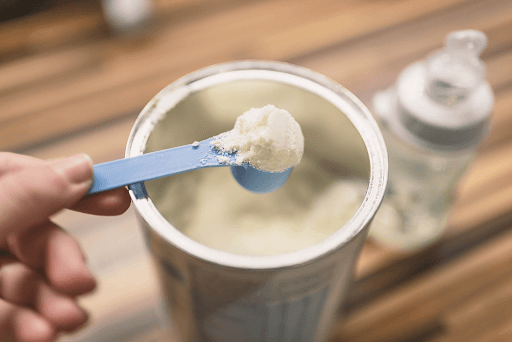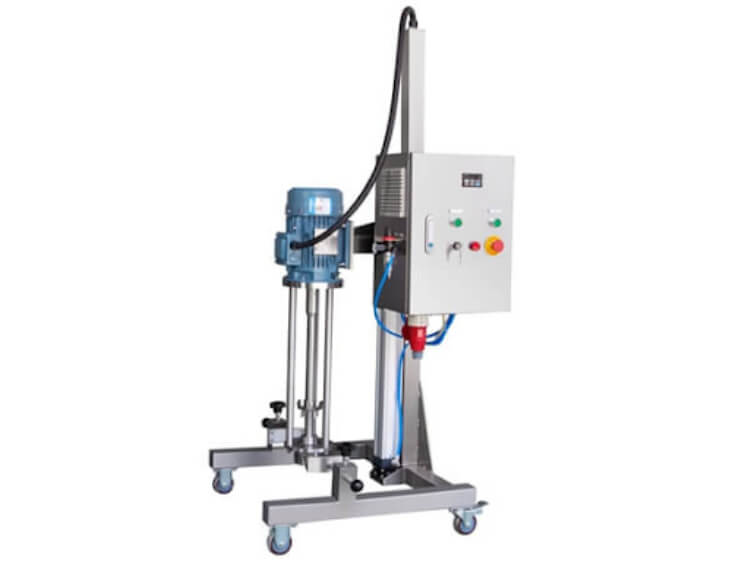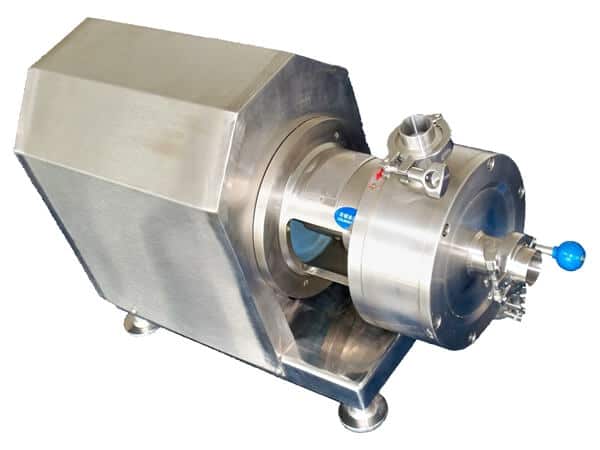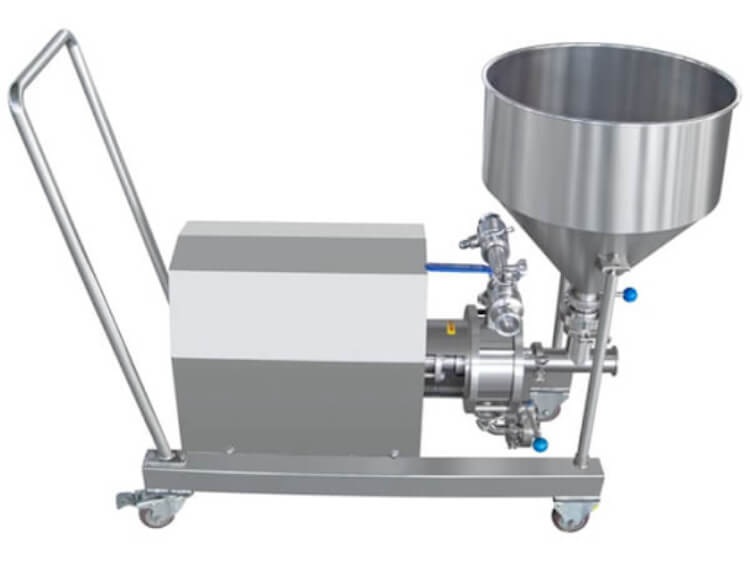Want to know how baby formula is made? This article summarizes the key ingredients, mixing equipment and process in making baby formula. Read on!
When it comes to ensuring your baby receives the proper nourishment, baby formula plays a significant role. Parents often rely on it for various reasons, and understanding how it’s made, its ingredients, safety standards, and innovations are crucial.

In this article, we will delve into the fascinating world of baby formula to provide you with a comprehensive understanding.
Key Takeaways:
- Understanding the production process of baby formula.
- The essential ingredients in baby formula.
- Safety and regulations in baby formula manufacturing.
- Innovations to make baby formula more like human milk.
What is Baby Formula Made From
A. Milk Proteins
Baby formula typically contains a blend of milk proteins, offering a balance between whey and casein. First infant formula, for example, is based on whey protein, which is easier to digest.
B. Carbohydrate Sources
Carbohydrate sources in baby formula provide energy for your baby’s growth. These sources are carefully chosen for optimal nutrition.
C. Fats and Oils
Fats and oils are essential for your baby’s brain and eye development. They are a vital component of baby formula, ensuring your baby’s overall well-being.
D. Vitamins and Minerals
Baby formula includes a comprehensive array of vitamins and minerals, ensuring your baby’s nutritional requirements are met.
E. Other Essential Nutrients
Additional essential nutrients are carefully incorporated into baby formula to support your baby’s growth and development.
Types of Formula
Understanding the different types of formula available is essential for catering to your baby’s specific needs. Here are the key types:
A. First Infant Formula (First Milk)
- Suitable from birth
- Contains whey protein
- Recommended as the first formula
B. Goats’ Milk Formula
- Suitable from birth
- Produced to the same standards as cow’s milk formula
- Not less likely to cause allergies
C. Hungrier Baby Formula (Hungry Milk)
- Suitable from birth but with advice
- Contains more casein
D. Anti-Reflux (Staydown) Formula
- Suitable from birth but only under medical supervision
- Thickened formula to prevent reflux
- Different instructions for making
E. Comfort Formula
- Suitable from birth but with advice
- Contains partially hydrolyzed cow’s milk proteins
- No evidence for its benefits
F. Lactose-Free Formula
- Suitable from birth but only under medical supervision
- For babies with lactose intolerance
G. Hypoallergenic Formula
- Suitable from birth but only under medical supervision
- For babies with cow’s milk allergy
H. Follow-On Formula
- Suitable from 6 months with advice
- No benefits when used before 6 months
I. Soya Formula
- Suitable from 6 months but only under medical supervision
- Made from soya beans
- Concerns about phytoestrogens
J. Growing-Up Milk (Toddler Milk)
- Suitable from 1 year with advice
- Marketed as an alternative to whole cow’s milk
K. Types of Milk to Avoid for Babies Under 1 Year
- Condensed milk, evaporated milk, dried milk
- Goats’ or sheep’s milk
- Other non-dairy “milks”
- Cow’s milk as a drink
Innovations to Make Baby Formula More Like Human Milk
Replicating the complexity of human milk in baby formula is an ongoing challenge. Innovations, such as the inclusion of DHA, ARA, and HMOs, aim to bridge the gap and provide your baby with nutrition that closely resembles a mother’s milk. However, this endeavor comes with its share of challenges.
Where is Baby Formula Manufactured
The production of baby formula takes place in state-of-the-art facilities that adhere to international guidelines. These facilities ensure the formula’s safety and integrity, with every batch meticulously examined before reaching the market.
The Baby Formula Manufacturing Process

A. Weighing and Mixing the Base Liquid
The journey of baby formula begins with the careful selection and weighing of ingredients, including purified water as the base liquid. Quality control and safety measures are at the forefront during this crucial phase.
B. Adding Powdered Ingredients
Various powdered ingredients, such as milk proteins, carbohydrate sources, and essential fats and oils, are combined in precise ratios to create the formula base.
C. Industrial Mixers: Homogenization and Pasteurization
One of the pivotal steps in the manufacturing process is the use of industrial mixers. These specialized machines, designed for precision and consistency, play a crucial role in creating a homogeneous mixture. Homogenization ensures uniform consistency, while pasteurization, a critical safety step, helps protect against harmful bacteria.
D. Spray Drying and Packaging
The liquid formula is then transformed into a powdered form using spray drying technology. This process helps extend shelf life and makes transportation easier. Stringent quality checks are conducted during packaging to ensure your baby’s safety.
E. Overcoming Challenges in the Manufacturing Process
Challenges like maintaining hygiene, ensuring quality ingredients, and adhering to safety regulations are faced head-on in the manufacturing process.
Problems in Baby Formula Mixing/Production:
- Consistency and Uniformity: Achieving consistent and uniform distribution of ingredients is paramount in baby formula production. Irregular mixing can lead to quality issues and affect the effectiveness of the formula.
- Efficient Dispersion: Ensuring that various ingredients, from proteins to essential nutrients, are efficiently dispersed throughout the mixture can be a challenging task. Inefficient dispersion may result in clumps or uneven texture, compromising the final product’s quality.
The Solution: Advanced Baby Formula Mixing with Ginhong Mixers
Addressing the unique challenges in baby formula production necessitates the use of advanced Ginhong Mixers. These cutting-edge solutions not only overcome these issues but also optimize the entire manufacturing process:
Stage 1: Mixing Precision
The journey begins with the mixing equipment. The vessel is filled with the base liquid, whether milk or water and the mixer is set into motion. Powdered ingredients are gently introduced into the system.
Industrial mixers, such as Ginhong Mixers harness their high-speed rotation to create a potent suction force, efficiently drawing both liquid and powders into the workhead.
Within the workhead, the materials undergo intense shear forces, ensuring even distribution and consistent blending.
Stage 2: Agglomerate Disintegration
In this phase, agglomerates are expertly disintegrated between the rotor blades and the stator wall. The product is then propelled through the stator, rejoining the mix. Simultaneously, fresh materials are seamlessly drawn into the workhead, perpetuating the mixing cycle. This continuous mixing pattern guarantees rapid and complete hydration of thickening agents, essential for achieving the desired baby formula consistency.
Stage 3: Dispersing Key Ingredients
In the final crucial step, essential ingredients are introduced and dispersed in a similar manner. This meticulous process results in a homogeneous mixture of baby formula, quickly achieved while maintaining the product’s desired texture and quality.
Ginhong Mixers play a pivotal role in baby formula production, overcoming common challenges and ensuring a consistently high-quality end product. Their precision mixing capabilities contribute to the uniform distribution of ingredients, from milk proteins to essential vitamins and minerals, facilitating the creation of baby formula with the desired nutritional properties.
Ginhong Baby Formula Mixing Equipment Product Range
Selecting the right industrial mixer for baby formula production depends on various factors, including batch size, ingredient formulation, and the desired viscosity of the final product. Ginhong offers a diverse range of mixing equipment tailored to meet your specific baby formula processing needs:
High Shear Batch Mixers

Ideal for small to large-sized baby formula batches, typically ranging from small to industrial-scale production. These mixers are suitable for the production of various baby formula formulations and come with the added convenience of working with a variety of mixing tanks. They are ideal for mixing baby formula emulsions with a wide viscosity range, ensuring that every batch meets the highest quality standards.
High Shear In-Line Mixers

When dealing with larger baby formula batches, Ginhong offers efficient in-line mixers that can be easily integrated into your production setup. These mixers facilitate uniform dispersion of ingredients, ensuring baby formula consistency while minimizing aeration. They’re suitable for processing high-viscosity baby formula emulsions, guaranteeing a smooth and lump-free final product for infants.
Ginhong Flashmix Powder Mixer

Ginhong Flashmix Powder Mixer offers an innovative solution for rapidly dispersing large volumes of powders into water, making it ideal for baby formula production. It has the ability to disperse solids in water efficiently, streamlining the manufacturing process by eliminating the need for pre-mixing of powdered ingredients.
Final Thoughts
In this article, we’ve explored the intricate process of making baby formula, the key ingredients, safety standards, and innovations aimed at providing the best possible nutrition for your baby. We also highlighted the critical role that industrial mixers play in ensuring uniformity in the formula.

